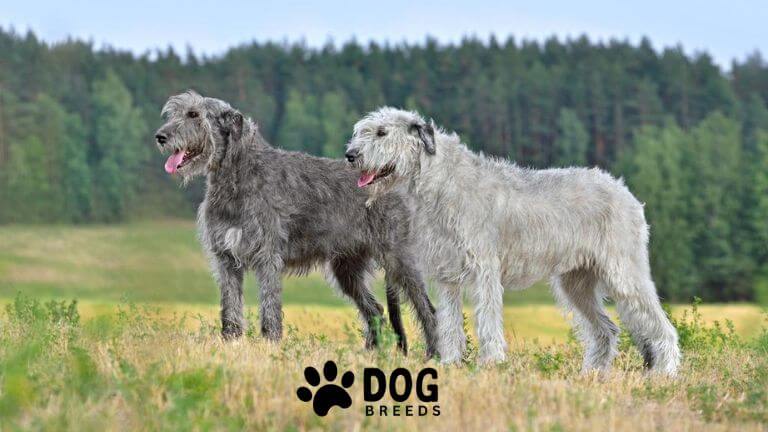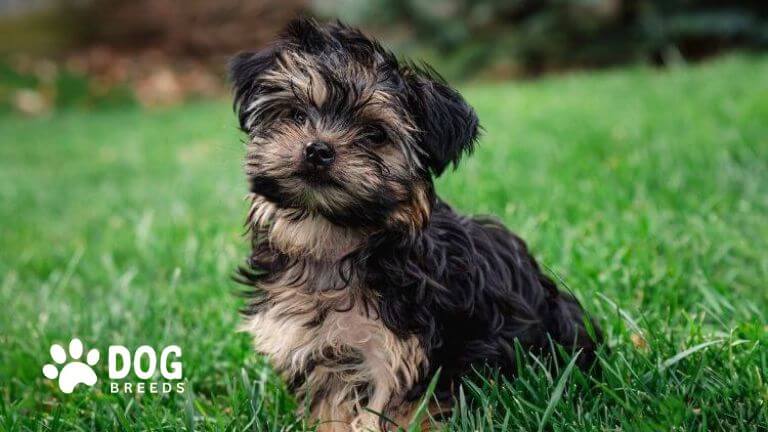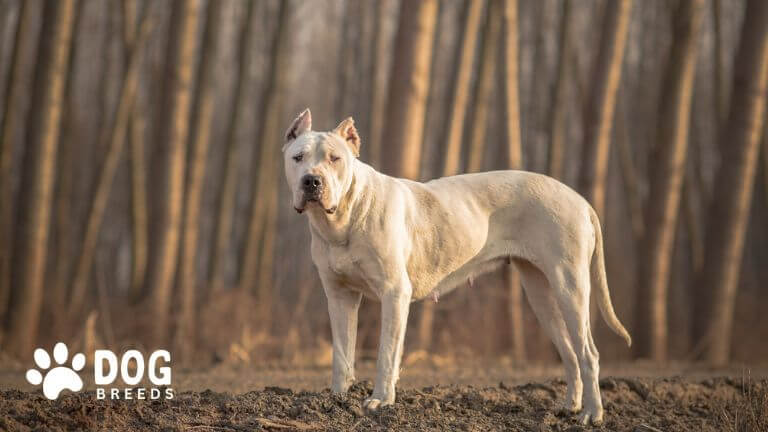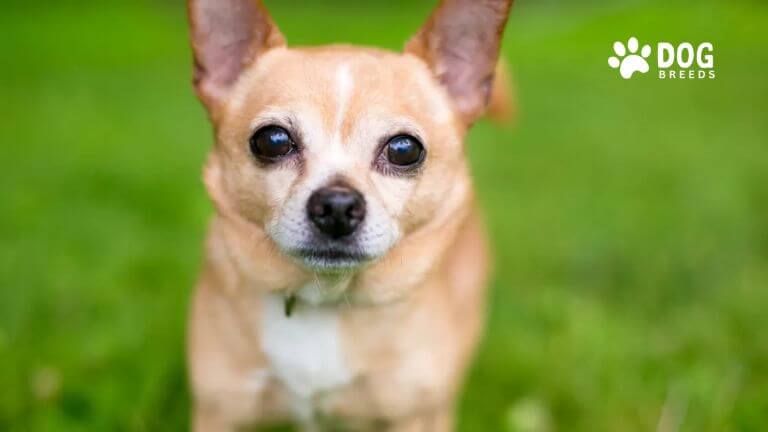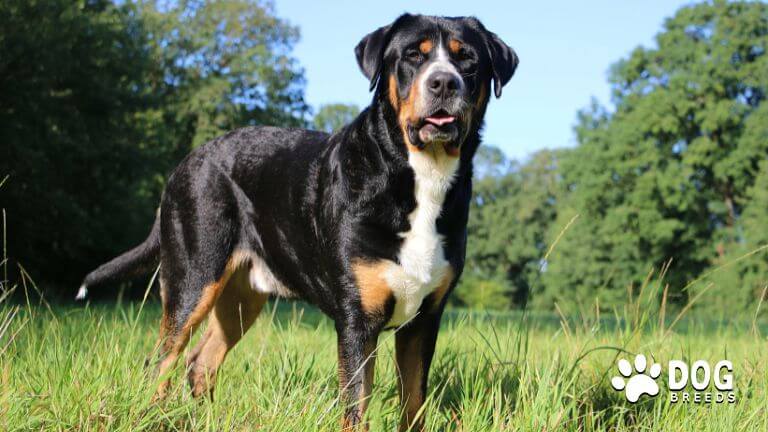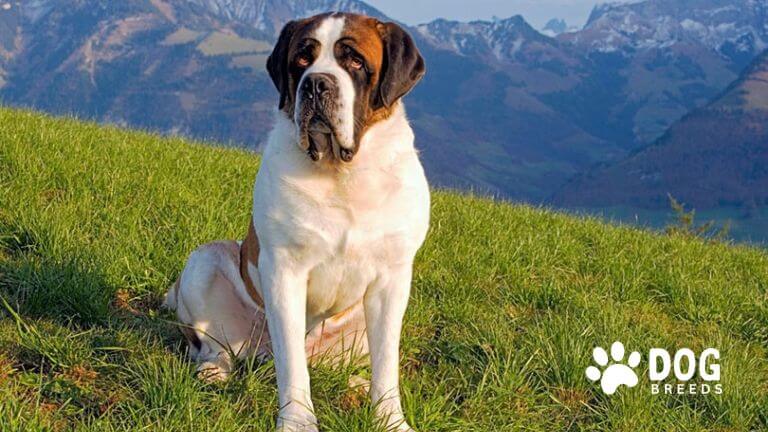Irish Wolfhound Dog Breed Guide: Traits, Care, and History
The Irish Wolfhound is renowned for its towering stature and gentle nature. As the tallest dog breed, it combines elegance with strength, making it a beloved companion for many. Historically revered as a hunter of wolves and large game, this breed symbolizes loyalty and courage. Irish Wolfhounds are cherished for their calm temperament, suitability for families, and majestic appearance.

History
The Irish Wolfhound has ancient origins, dating back to Roman times. These dogs, known as “cú faoil” in Gaelic, were used by Irish nobility to hunt wolves and protect livestock. They became symbols of status, often gifted to royalty and dignitaries. The breed faced near extinction in the 19th century after wolves disappeared from Ireland, but Captain George Augustus Graham revived it by crossing the few remaining Wolfhounds with breeds like Scottish Deerhounds and Great Danes. Today, the Irish Wolfhound thrives as a gentle giant and a reminder of Ireland’s rich history.
Irish Wolfhound Dog Breed Guide
| Characteristic | Details |
| Origin | Ireland |
| Group | Hound |
| Size | Giant |
| Height | Males: Minimum 32 inches (81 cm), Females: Minimum 30 inches (76 cm) |
| Weight | Males: 120-180 lbs (54-81 kg), Females: 105-140 lbs (48-64 kg) |
| Lifespan | 6-8 years |
| Coat Type | Rough and wiry |
| Coat Colors | Gray, brindle, red, black, white, fawn |
| Temperament | Gentle, loyal, calm, intelligent, and friendly |
| Energy Level | Moderate |
| Exercise Needs | Daily moderate exercise (long walks, runs in a secure area) |
| Grooming Needs | Weekly brushing, occasional trimming of the coat |
| Trainability | Intelligent but can be independent; responds well to positive reinforcement |
| Good with Children | Yes, known for their gentle and patient demeanor |
| Good with Pets | Generally good but may have prey drive towards small animals |
| Health Concerns | Hip dysplasia, heart disease, bloat, osteosarcoma |
| Best Suited For | Families, active individuals, or rural homes with space to accommodate their size |
| Special Considerations | Prone to certain genetic conditions; large size requires early training and socialization |
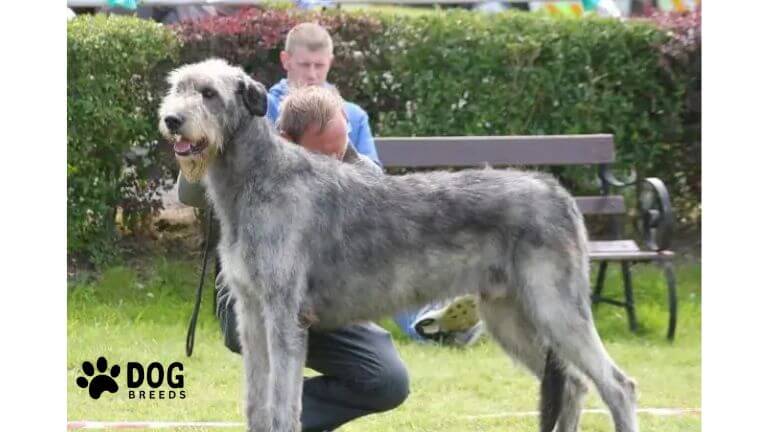
Physical Characteristics
- Size: Males average 34-35 inches in height, while females stand slightly shorter. Males weigh 140-180 pounds; females weigh 115-140 pounds.
- Coat: The coat is rough and wiry, available in colors such as gray, brindle, red, black, and white.
- Distinctive Features: Their large, muscular build is balanced by a graceful posture. The deep chest and long legs emphasize their athleticism.
Temperament and Personality
Irish Wolfhounds are gentle, loyal, and affectionate. Despite their size, they are calm and adapt well to family life. They are friendly with children and other pets, making them ideal companions for families. While not aggressive, their sheer size and deep bark can deter intruders, adding to their role as protectors.
Grooming and Maintenance
- Brushing: Brush the coat weekly to manage shedding and prevent tangles.
- Bathing: Bathe as needed, typically every 6-8 weeks.
- Nail Care: Trim nails regularly to avoid overgrowth.
- Ears and Eyes: Check for debris or signs of infection weekly.
Exercise and Activity Requirements
Irish Wolfhounds need moderate exercise to maintain health.
- Daily Walks: Aim for two 30-minute walks daily.
- Playtime: Provide space for running and light play.
- Avoid Overexertion: Their joints are prone to stress, especially during puppyhood, so avoid high-impact activities until fully grown.
Training and Socialization
These intelligent dogs are eager to please but may display a stubborn streak.
- Early Socialization: Expose puppies to various people, pets, and environments.
- Positive Reinforcement: Use rewards-based methods to encourage good behavior.
- Patience and Consistency: Maintain a calm and consistent approach to training.
Health and Lifespan
Irish Wolfhounds have a lifespan of 6-8 years, with some common health concerns:
- Hip Dysplasia: Ensure regular vet check-ups and provide joint supplements if needed.
- Heart Disease: Monitor for signs of dilated cardiomyopathy.
- Bloat: Feed smaller meals multiple times a day to reduce risk.
- Preventive Care: Schedule annual vet visits and follow a vaccination plan.
Diet and Nutrition
- High-Quality Food: Offer premium dog food formulated for large breeds.
- Portion Sizes: Consult with a vet to determine the appropriate quantity based on age and activity level.
- Dietary Restrictions: Avoid high-fat diets and foods that may trigger bloat.
- Supplements: Consider glucosamine and omega-3s for joint and coat health.
Pros and Cons
- Pros: Gentle, loyal, excellent with children, and visually impressive.
- Cons: Short lifespan, high grooming and feeding costs, and space requirements.
Conclusion
The Irish Wolfhound is a majestic breed with a heart as big as its size. Ideal for families with ample space and a love for gentle giants, this breed thrives in homes where it can enjoy companionship and light exercise. Before adopting, assess your ability to meet their needs and consult reputable breeders or shelters for guidance.
There are plenty of dog breeds to suit all kinds of lifestyles and homes. With a little research, you can find your next best friend!
Related Dog Breeds:
- Brittany Spaniel Dog
- Tibetan Mastiff Dog
- Labrador Retriever Dog
- Doberman Pinscher Dog
- Chow Chow Dog
- Great Dane Dog
- St. Bernard Dog
FAQs about the Irish Wolfhound Dog Breed
Is an Irish Wolfhound a good family dog?
Yes, Irish Wolfhounds are excellent family dogs. They are gentle, patient, and affectionate, making them great companions for children and adults alike. Their calm demeanor allows them to integrate well into family life, though supervision is recommended around small children due to their large size.
Why are Irish Wolfhounds so expensive?
Irish Wolfhounds are expensive due to their rarity and the costs associated with breeding and raising them. Breeders must ensure proper health testing to avoid genetic issues, and the large size of the breed increases the costs of care, feeding, and veterinary expenses during puppyhood. Prices for Irish Wolfhound puppies can range from $2,000 to $4,000.
What is bigger: Great Dane or Irish Wolfhound?
The Great Dane is heavier, but the Irish Wolfhound is taller. Male Great Danes typically weigh 140-200 pounds, whereas Irish Wolfhounds weigh 140-180 pounds. In height, male Irish Wolfhounds average 34-35 inches at the shoulder, slightly taller than the Great Dane’s 32-34 inches.
Are Irish Wolfhounds high energy?
Irish Wolfhounds are not high-energy dogs. They have moderate exercise needs and enjoy daily walks or short play sessions. They tend to be laid-back indoors, making them suitable for calm households.
What is the world’s largest dog?
The Great Dane holds the title for the world’s largest dog by weight and overall size, with some individuals like “Zeus” measuring over 7 feet tall when standing on hind legs. However, the Irish Wolfhound is the tallest breed by shoulder height.
Is the Wolfhound the tallest dog?
Yes, the Irish Wolfhound is the tallest dog breed, with males standing around 34-35 inches at the shoulder. Their height surpasses that of other breeds, including the Great Dane, when measured at the shoulder.
Can Irish Wolfhounds be aggressive?
No, Irish Wolfhounds are not typically aggressive. They are known for their gentle and friendly demeanor. However, they can exhibit protective instincts if they perceive a threat, though they are more likely to deter than attack.
What is the most expensive dog?
The Tibetan Mastiff is considered the most expensive dog breed, with some individuals selling for over $1 million. While Irish Wolfhounds are costly, their prices are much lower in comparison.
Do Wolfhounds eat a lot?
Yes, Irish Wolfhounds consume a significant amount of food due to their large size. Adult Wolfhounds can eat 4-8 cups of high-quality dog food daily, depending on activity level and age. Puppies have higher nutritional needs during growth spurts.
What are the negatives of Irish Wolfhounds?
- Short Lifespan: 6-8 years.
- Health Concerns: Prone to bloat, hip dysplasia, and heart disease.
- High Costs: Expenses include feeding, grooming, and medical care.
- Space Needs: Require a large home and yard.
- Fragile Joints in Puppies: Exercise must be monitored to prevent injuries.
Will an Irish Wolfhound protect you?
While not aggressive, Irish Wolfhounds are protective and will act as a deterrent due to their imposing size and deep bark. They are more likely to alert owners than to attack intruders.
Are Wolfhounds easy to train?
Irish Wolfhounds are intelligent and eager to please but can be stubborn. Consistent, positive reinforcement training works best. Early socialization and patient guidance help them develop into well-mannered companions.
- Why Are Dalmatians Not Popular? Uncovering the Truth Behind the Rarity of This Iconic Breed - April 16, 2025
- Top 15 Chinese Dog Breeds: Discover the Best Dogs from China - April 14, 2025
- Dalmatian Dog Breed: History, Care, Personality & Health - April 3, 2025
